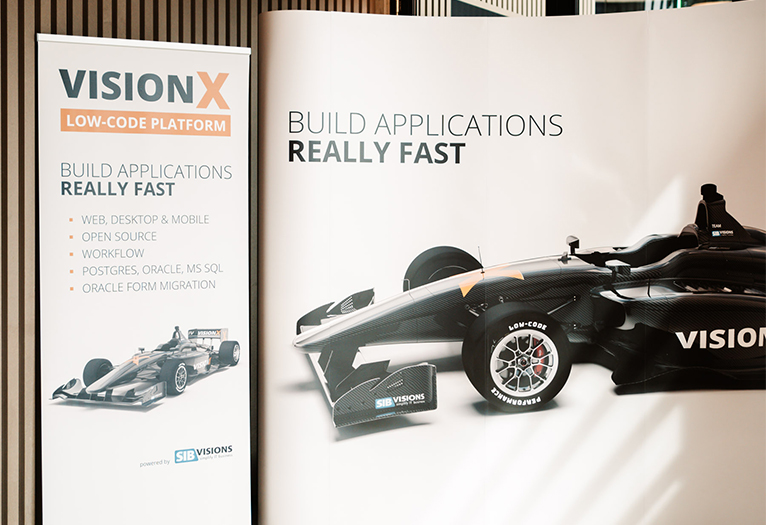MES meets manufacturing execution platform

Services become individual solutions
MES solutions are crucial tools on the path to networked manufacturing and form the stable basis for handling digital production processes. Integrative manufacturing execution platforms are also gaining in importance as a component of a smart factory and as an important enabler for more customer benefits.
Equipped with the goal of realising vertical and horizontal integrations for companies in a resource-saving way, they thus create unprecedented opportunities and optimisation potential in the area of digitalised production!
For the experts of the VDMA (German Engineering Federation), there is no question that tougher competition on the international stage requires continuous optimisation of value-added processes. MES solutions are important tools on the way to a smart factory and networked manufacturing, says the VDMA paper entitled ‘Added value through software’. Equipped with extensive functionalities, they become a central hub in manufacturing and can thus map and optimise holistic processes. It is also a fact that software systems, technologies and applications are fighting for their permanent place in the value chain! The user himself is quickly overwhelmed with all this and is looking for standardised best-of-breed solutions that support prompt integration. This is where the manufacturing platform comes into play.
Manufacturing execution platform orchestrates MES services and more
First of all, it must be said that the central role of the MES system will not change. However, an opening to the outside is inevitably necessary, because the processes of a smart factory are becoming increasingly flexible, the number of IIOT devices is growing rapidly and the exchange via interfaces alone is simply no longer manageable. Innovative providers are therefore already giving their users the option of integrating their MES services individually into their own system landscape thanks to modern communication technologies. A future-proof manufacturing platform takes on these tasks in order to bring together and ‘orchestrate’ all the necessary (individual) components.
The study ‘Platform economy in mechanical engineering’ by the VDMA, Deutsche Messe and Roland Berger goes on to say: “In conjunction with IoT technologies, digital platforms offer the opportunity to network machines and plants and to use digital services with economies of scale.” It is important here that companies make sure to use as much standard software and technologies as possible so that, on the one hand, the time to a mature solution can be shortened and, on the other hand, individual components remain interchangeable. A vendor lock-in situation – i.e. dependence on individual providers – can thus be prevented.

Companies must take care to use as much standard software and technologies as possible, on the one hand to shorten the time to a mature solution, and on the other hand to ensure that individual components remain interchangeable. A vendor lock-in situation can thus be prevented.
Full integration as the ultimate goal
A manufacturing execution platform must therefore always pursue the goal of enabling vertical and horizontal integrations for companies in a resource-saving way and thus offer unprecedented possibilities. The optimisation potentials that can be derived from this are manifold. One example is ‘real-time integration’, i.e. the real-time integration of data and functions. A manufacturing platform like cronetworld enables the consolidation and orchestration of all production-relevant software systems, technologies and applications into a homogeneous whole. The basic prerequisite for this is a uniform, cross-system user interface and, of course, as already mentioned, an open interface and communication level of the centrally located MES to enable the problem-free connection of peripheral and external systems.
Improved traceability of processes
An essential foundation for the success of a manufacturing platform is the applied basic technologies. While the MES with its tried and tested standard functionalities and well thought-out, proven data structures provides the necessary stability, on the way to the smart factory, however, new technologies and applications are needed to enable the necessary and unrestricted system integration. For example, a powerful service bus creates the basis for real-time integration and thus ONE system for using data and functions of all shop floor applications. This results in significantly improved traceability of processes across several systems – including control and monitoring options. Another advantage of Service Bus technology is that it is ideally suited for both horizontal integration (e.g. communication with PLM) and vertical integration (e.g. OPC-UA, S7, MQTT, M2M and edge functions).
So, using powerful core systems (MES) and the right integration and communication technologies, a manufacturing platform like cronetworld can flex its muscles. At this point, the successful interplay between standard software and customisation options should also be mentioned. By breaking down standard functions into individual services, which in turn can be combined with other services, the basis is created for designing highly individual solutions. The efforts of the manufacturing industry in the course of its digitalisation strategy around the topic of ‘low-code development’ are mentioned here as an example. This technology allows qualitative, company-specific applications to be developed quickly and easily, despite low developer skills.
Realising digitalisation in a practical way with low-code
Our VisionX low-code platform enables the flexible expansion, customisation and integration of the ‘cronetworld’ manufacturing platform in an existing system landscape,” says Roland Hörmann, CEO of low-code provider SIB Visions. “Users can create web and native mobile applications that replace Excel sheets, manual processes and data entry, or connect existing systems across sites, create dashboards or provide use-case specific forms instead of complex ERP system masks. The possibilities are almost unlimited. All this can be done by IT-savvy employees without having to resort to experienced software developers,” Hörmann continues. Whether low-code and no-code solutions are important for a platform’s ability to innovate and for customer benefit depends very much on the customer’s needs as well as on the approach and the staff. If individual requirements can be solved via no-code, then this is a massive advantage in terms of transparency of the solution and speed of implementation.
“Low-code is always a solution to realise digitisation in a practical way by the people acting in the company – instead of endless green table discussions with little tangible results,” Roland Hörmann continues. “This way, companies don’t lose out in the agile and digital world and can also expand their competitive advantages.” For him, the advantages of low-code lie in the speed and flexibility of digitalisation and in process automation through web and mobile applications.
However, Hörmann does not believe that low-code solutions will even be able to replace traditional software development in the future: “Classic software development will always be necessary in order to be able to implement complex or specific requirements.”
Conclusion
A powerful MES at the core, future-proof, proven and integrative technologies as bridge builders and suppliers who know what they are talking about: The manufacturing platform of the future has already arrived in reality and is thus the essential success factor of a smart factory!



